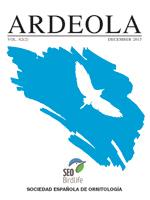This long-term study (10 years) aimed to check if the sex-ratio of dunlins Calidris alpina at a stopover site in the southern Baltic region was biased. Two age classes among non-juvenile dunlins were recognised: immatures (2nd calendar year) and adults (> 2nd calendar year). There was a significant male bias in the sample of 4,406 non-juvenile dunlins captured during their southward migration. Overall, 60.3% of immatures and 59.4% of adults were males. Particularly among adults, the proportion of males increased significantly after the start of autumn migration. The annual sex-ratios were consistently male biased, but varied somewhat and fluctuated in parallel for adults and immatures. One plausible explanation for the male bias is that males and females differ in migration strategy. Females may make longer flights and avoid stopover sites with unpredictable feeding conditions, such as the southern Baltic coasts, which provide low quality habitat. Assuming a balanced non-juvenile population sex ratio, the ‘missing’ females could stopover elsewhere in the Baltic or fly directly to the tidal areas of the Wadden Sea. The sex ratio in the study area may depend on wind conditions during the early phase of autumn migration. In some years, adverse weather may force more females than usual to stopover in the study area.
How to translate text using browser tools
1 December 2015
Male-Biased Sex-Ratio of Dunlins Calidris alpina in the Gulf Of Gdańsk (Southern Baltic) During Autumn Migration
Włodzimierz Meissner
ACCESS THE FULL ARTICLE

Ardeola
Vol. 62 • No. 2
December 2015
Vol. 62 • No. 2
December 2015
aves limícolas
costas de Polonia
migración
migration
Polish coast
sitio de parada migratoria
stopover site




